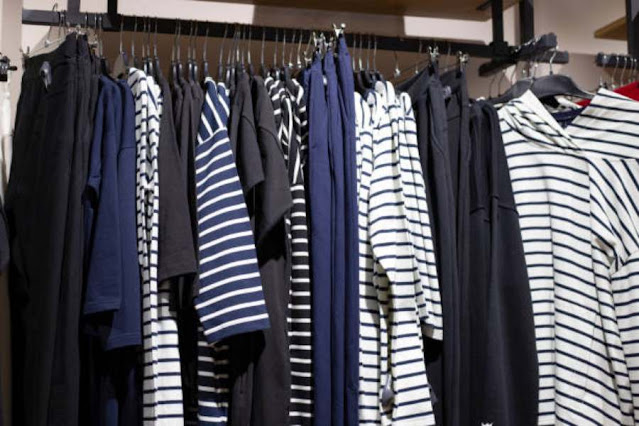
In an technology marked by way of environmental awareness
and moral consumerism, the fabric and fashion enterprise faces a crucial
undertaking: the way to balance the growing demand for latest and low cost
apparel with the want for sustainability and ethical practices. This project
has caused the emergence of textile fashion sustainability requirements, a
fixed of guidelines and certifications aimed toward promoting eco-friendly
practices, moral production strategies, and social responsibility within the
fashion industry. These standards not best serve as a compass for manufacturers
and manufacturers but additionally empower customers to make knowledgeable and
moral picks. In this newsletter, we can explore the significance of textile
style sustainability requirements, their effect at the enterprise, and the
advantages they offer to both companies and customers.
1. The Rise of Sustainability in Fashion
The fashion enterprise, lengthy criticized for its
environmental impact and labor practices, has passed through a substantial
transformation in recent years. Increasing consciousness about climate change,
pollutants, and social problems has induced customers to demand greater
transparency and obligation from style brands. In response, the enterprise has
witnessed a surge in sustainable style initiatives, with many companies
integrating green substances, moral production practices, and truthful
exertions requirements into their business fashions.
2. Textile Fashion Sustainability Standards: A Guiding Light
Textile fashion sustainability standards play a essential
function in shaping the industry's moral landscape. These standards, set by using
businesses consisting of the Global Organic Textile Standard (GOTS), OEKO-TEX,
and Fair Trade, provide clear guidelines for sustainable and ethical practices.
GOTS, for example, certifies textiles crafted from natural fibers, making sure
they meet strict environmental and social standards. OEKO-TEX makes a
speciality of making sure that textiles are loose from harmful substances,
safeguarding both purchasers and workers. Fair Trade certification guarantees
that producers in developing international locations receive truthful wages and
paintings below secure conditions.
3. Promoting Eco-Friendly Materials
One of the middle elements of fabric fashion sustainability
requirements is the promoting of green materials. These requirements encourage
the usage of natural cotton, hemp, bamboo, and different sustainable fibers
that have a lower environmental impact. Organic farming practices, which avoid
synthetic pesticides and genetically changed seeds, sell soil fitness and
biodiversity. By endorsing using such substances, sustainability requirements
lessen the carbon footprint of the fashion industry and guide the increase of
eco-conscious agriculture.
4. Ethical Production Practices
Textile style sustainability standards emphasize ethical manufacturing practices, ensuring that workers in the course of the deliver chain are treated fairly and work below secure situations. These standards prohibit toddler labor, compelled exertions, and discrimination, promoting humane operating situations. Brands adhering to these requirements regularly collaborate with producers that offer truthful wages, affordable operating hours, and possibilities for ability development. By assisting ethical production practices, sustainability standards guard the rights and well-being of employees, fostering a more equitable style enterprise.
5. Reduction of Chemical Usage
Another critical factor of fabric style sustainability
requirements is the discount of chemical utilization in textile production.
Harmful chemicals utilized in dyeing, finishing, and treating textiles can
pollute waterways, harm ecosystems, and pose health dangers to people and
consumers. Sustainability standards inspire the adoption of green dyes and
chemical compounds, in addition to water and energy-green tactics. By
minimizing the usage of hazardous materials, these requirements contribute to
the upkeep of environmental integrity and guard public fitness.
6. Consumer Empowerment and Conscious Choices
Textile fashion sustainability standards empower purchasers
to make aware selections aligned with their values. When buyers see
certifications like GOTS or Fair Trade on clothing labels, they are able to
trust that the goods meet particular ethical and environmental standards. This
transparency permits customers to help manufacturers that prioritize
sustainability and ethical practices, encouraging other businesses to adopt comparable
requirements. As a result, customer call for will become a riding force for
fantastic change in the style industry.
7. The Business Case for Sustainability
Beyond ethical considerations, fabric fashion sustainability
standards provide tangible blessings to agencies. Sustainability tasks can
beautify emblem reputation, attract environmentally conscious consumers, and
foster patron loyalty. Moreover, sustainable practices regularly result in
resource efficiency, decreasing waste and operational charges. Additionally,
get entry to to eco-friendly materials and moral supply chains can create a
competitive benefit, positioning sustainable style manufacturers as leaders in
the industry. By embracing sustainability, corporations no longer best make
contributions to a extra moral and eco-friendly global but also strengthen
their marketplace position and lengthy-time period viability.
8. Conclusion:
Textile fashion sustainability requirements represent a
pivotal step toward remodeling the enterprise right into a extra ethical,
eco-friendly, and socially accountable space. These standards guide the fashion
area towards sustainable practices, promoting transparency, equity, and
environmental stewardship. As purchasers increasingly more prioritize moral
picks, companies adopting sustainability standards aren't simplest meeting
market needs however also riding high-quality change within the global style
panorama. By embracing those requirements, the fashion enterprise can pave the
way for a sustainable destiny, in which style, ethics, and environmental
recognition harmoniously coexist, ensuring a brighter the following day for
each fashion fans and the planet.